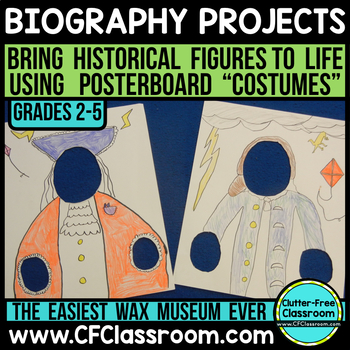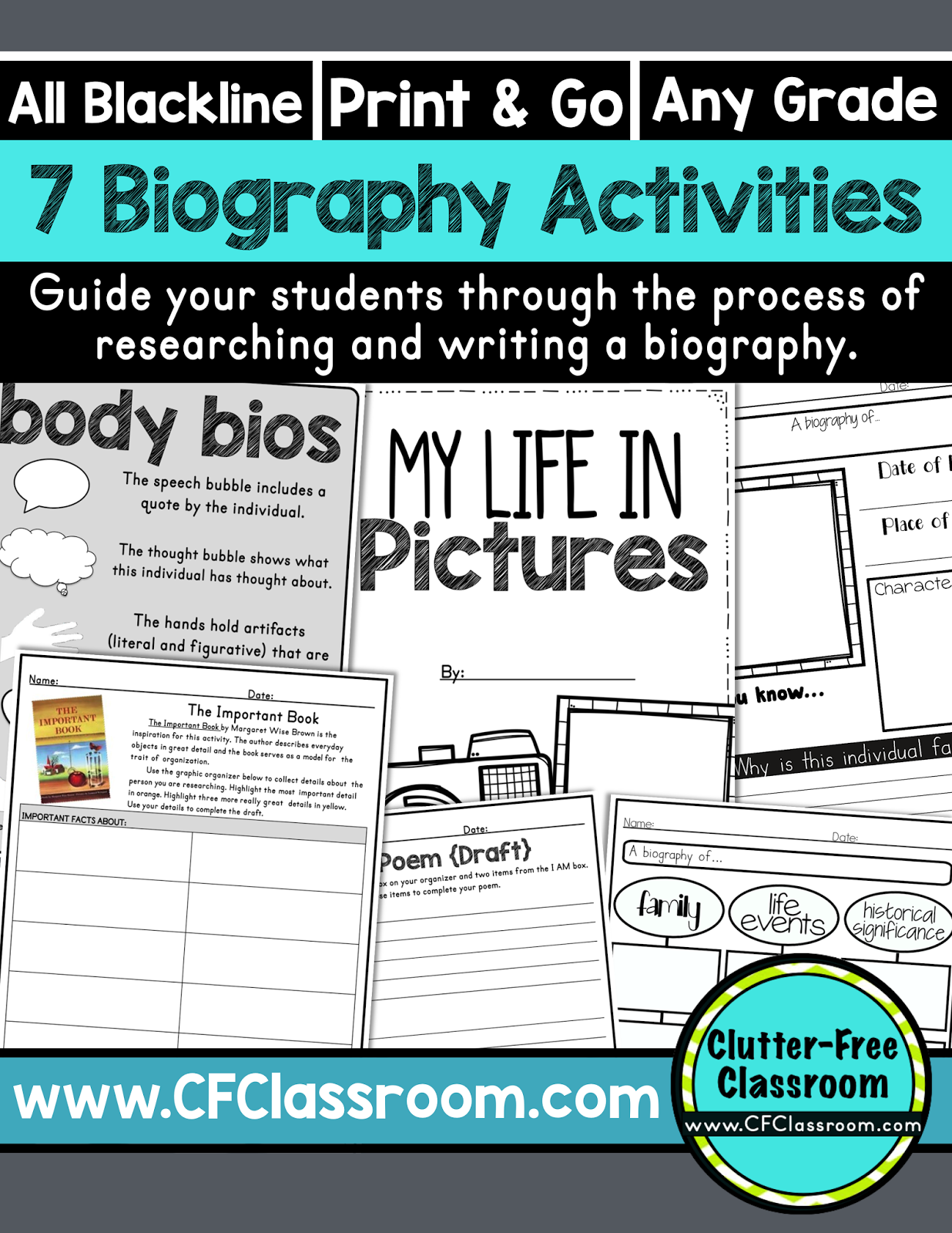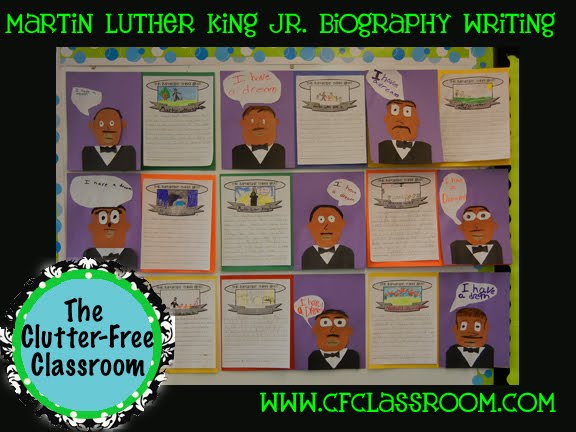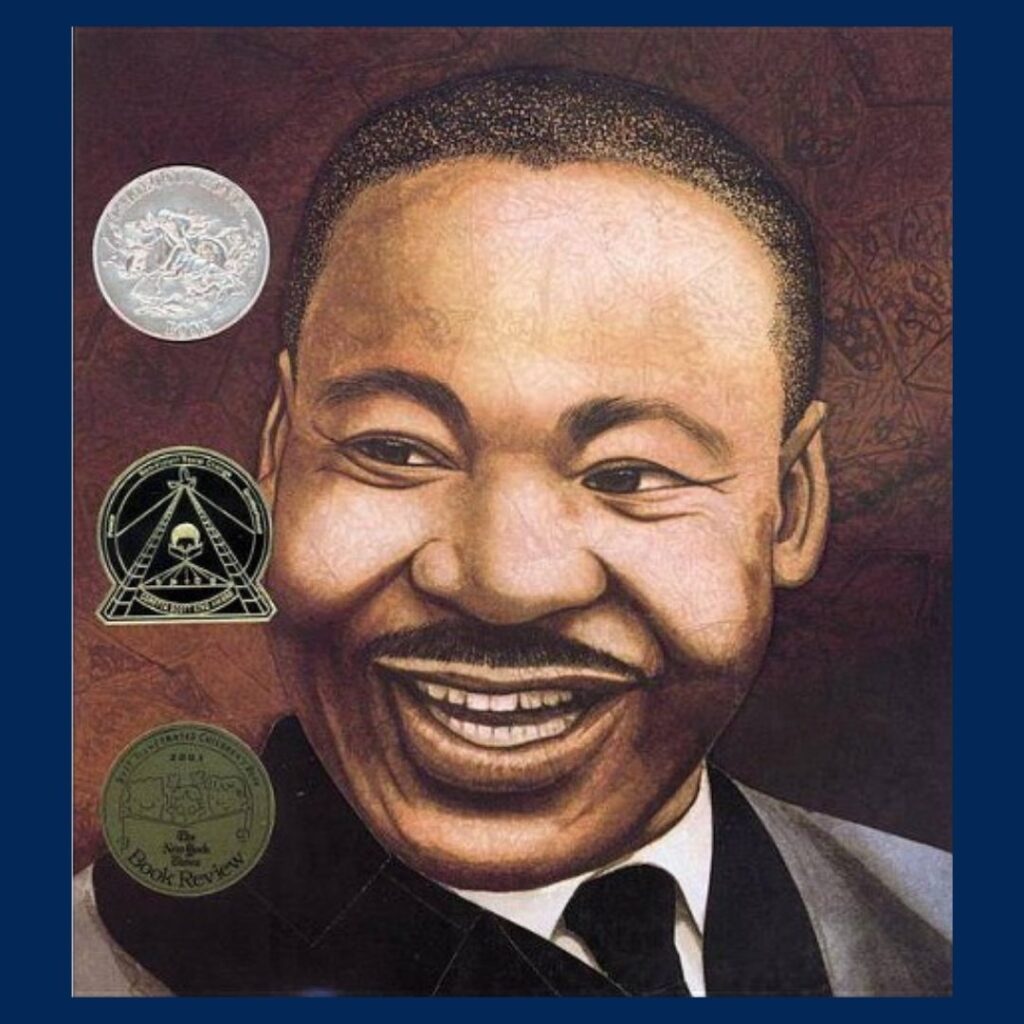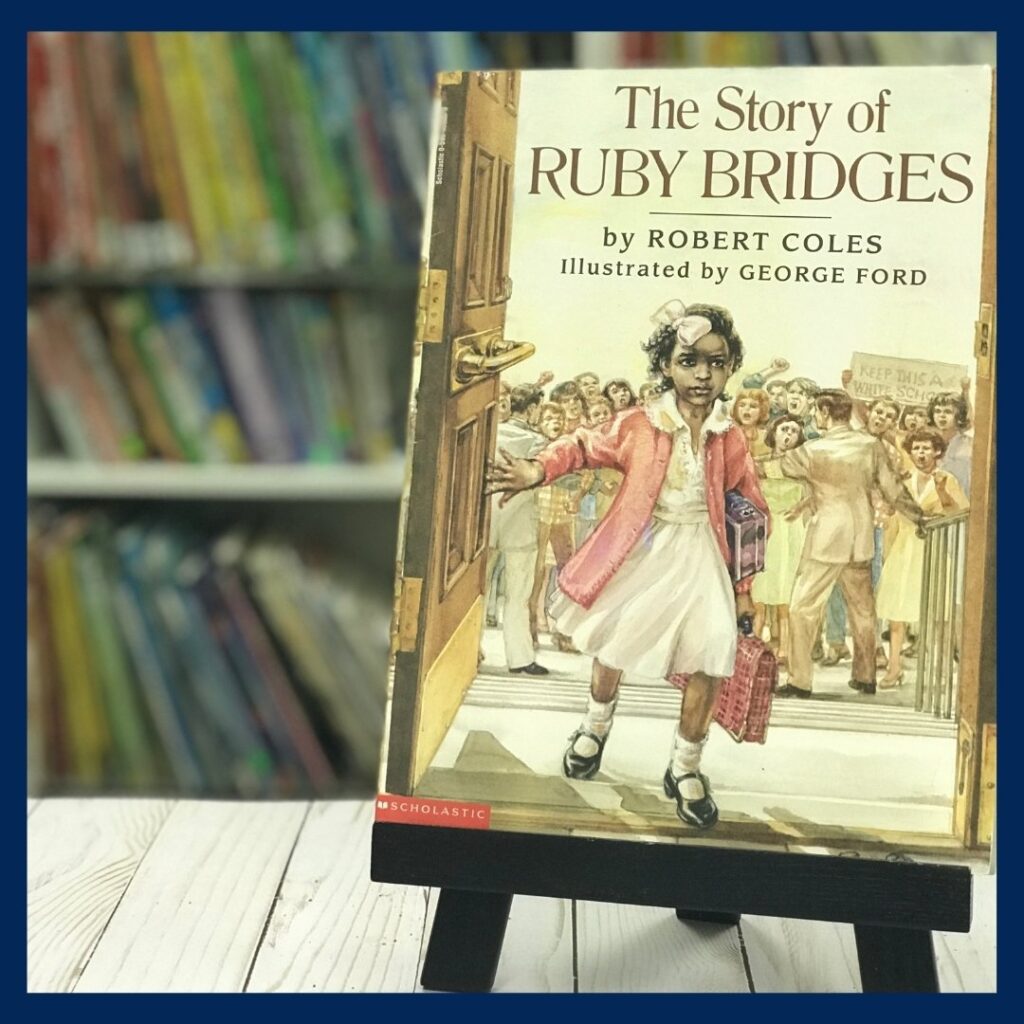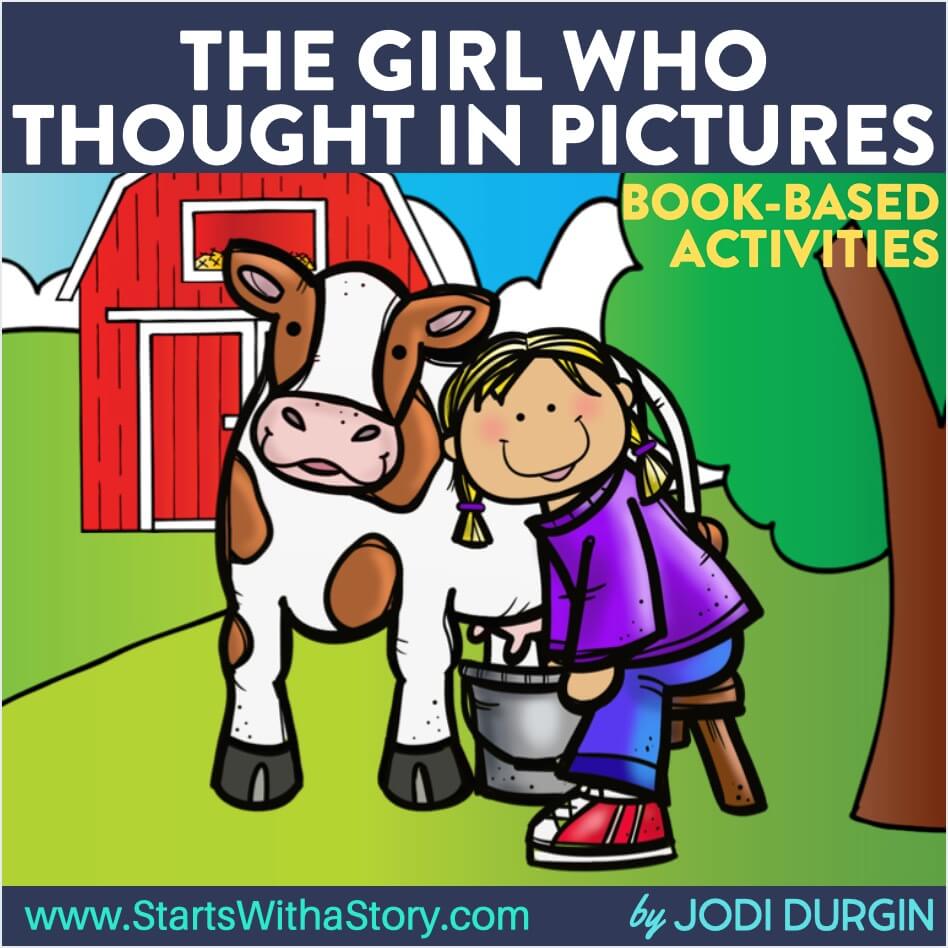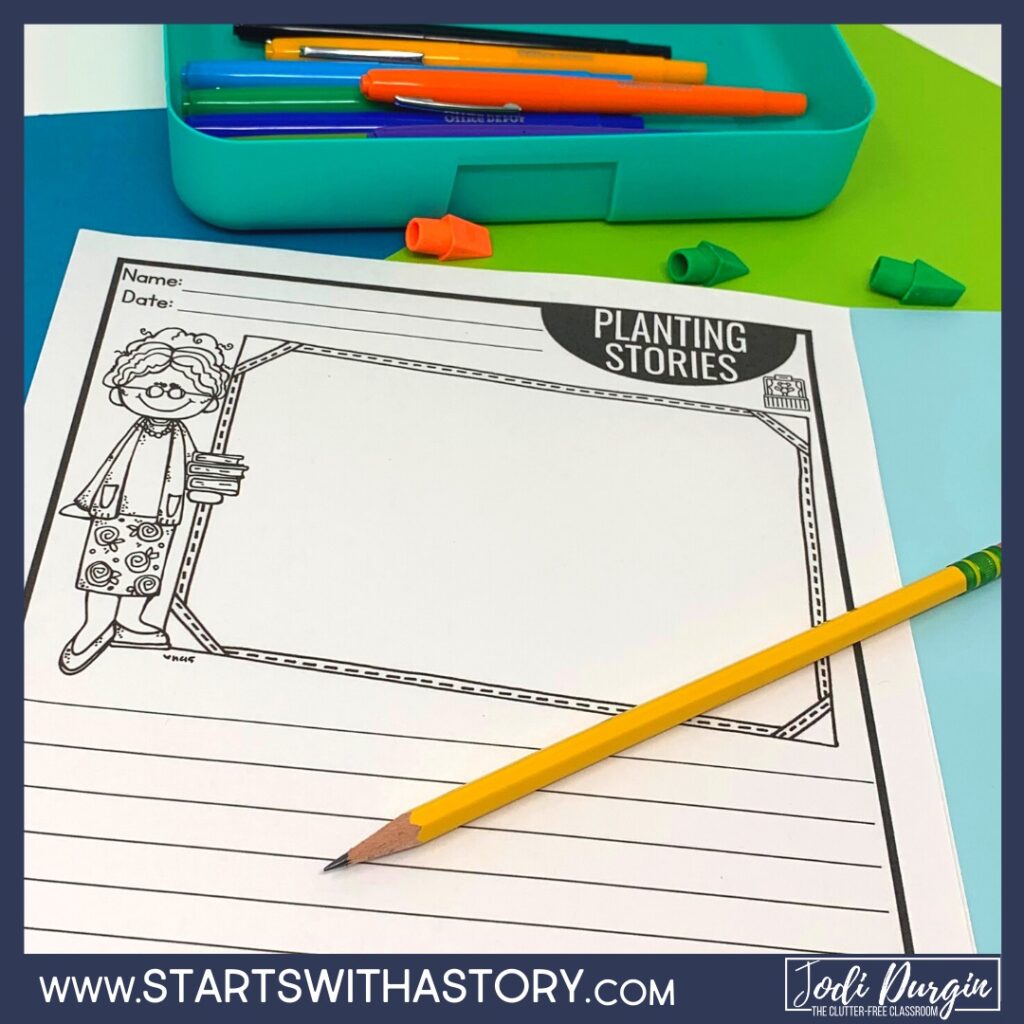Teaching biographies can feel intimidating at first, but once you have a solid understanding of the genre, a roadmap of how to teach it, and teaching resources and activities, it’s easy! This post will equip you with all of that and more! You’ll feel prepared (and maybe even excited) about teaching biographies (especially if you are using this biography project and these biography activities)!
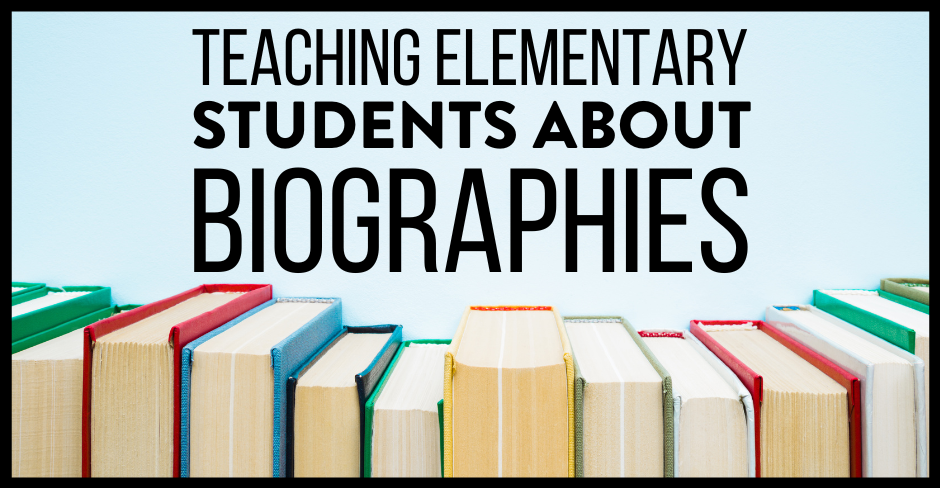
The Benefits Of Students Reading Biographies
There are so many benefits of teaching biographies and autobiographies! Readers are transported into that person’s life. They learn all about the person’s achievements, struggles, culture, life lessons, and personality. Biographies can also teach us about the world through the eyes of the subject while allowing the reader to make connections to them. Most students can find biographies they enjoy when they find people to read about that connect with their likes and dislikes to top it off.
How To Introduce The Biography Genre To Students
The easiest way to introduce and teach biographies is by gathering as many biographies and autobiographies as possible from your classroom library, school, and public library. Make sure that all the books you collect are around your student’s reading levels. This idea works for any theme.
Then, set out the books you collected on each of your students’ tables and have them explore. Ask them to write down what they notice. What do all the books have in common? Have students write down their findings on chart paper.
Next, have each table share with the class what they noticed. They should come up with some ideas like:
- They are all about people.
- The person accomplished something big.
- They all include essential dates or a timeline of the person’s life.
- They included real pictures or illustrations of the person.
- The books all tell factual information, and there are no made-up stories.
Lastly, tell students that books with these characteristics are called biographies or autobiographies. Be sure to tell students the difference between biographies and autobiographies too. Create an anchor chart to hang up for students to reference throughout your biography unit!
4 Ideas For Biography Mini Lessons
After introducing biographies, try one of these mini-lesson ideas for teaching biographies!
- Have students pick a person they are interested in learning more about. Then have them find books about the person and complete a research project about that person to present to the class. You could even take it a few steps further and have students share what they learned in costume as the person they researched in a wax museum activity!
- Have students create a social media page of the person they learned about in their biography
- Have students read about a person of interest, and then write journal entries as that person.
- You could make it seasonal! Around fall, have students paint a pumpkin like a person they read about and present important events or accomplishments as they share their pumpkin. In spring, students could make biography flowers where the center was a photo of the person, and the petals are important events and accomplishments.
Strategies For Using Mentor Texts To Model Reading Biographies
Teaching biographies is simple when you use these strategies!
First, pick any biography or autobiography mentor text and read it aloud. Ok, maybe not ANY. Be sure to choose one that will be engaging to your students. Think about the things they enjoy and go from there. I love picture books because students can generally read them in one session. (Make sure you preview the text first and mark with sticky notes to remember to stop and discuss during the read-aloud!)
Stop at important dates, accomplishments, life lessons, or significant life events to discuss. I even stop to discuss any figurative language or text features included. This will help students with both reading and writing! Students generally have TONS of connections to share during biography read alouds that lead to great conversations.
How To Teach Students To Write Biography Reports
One way to help students learn how to write biographies is to write their first one about themselves! Students can brainstorm what should be included in their biography by creating a timeline that includes important events in their life. Then, they use the timeline to help them write their biography in chronological order. You can model this with a biography about yourself on an anchor chart for students to use if they need help. This is also an excellent way to get to know each other at the beginning of the year!
When it comes to writing biographies about other people, students need to have read several biographies to get an idea of how authors organize this type of writing. When you read aloud, be sure to point out that authors of biographies generally write the story of the person’s life from beginning to end. So students will need to be familiar with sequential order/chronological order text organization. Have students fill in a timeline when you model during read alouds. Point out that biographies usually focus on a part of the person’s life that taught them a life lesson. This biography project and biography activities are great resources for teaching biographies.
Resources for Teaching Biographies
Here are some resources for teaching biography:
1. Biography Project for Elementary Students
Are you looking to begin using a biography project? Perhaps you are just looking for something better than you already use. If so, this is the resource you need! It is a great resource for teaching elementary students about biographies.
This is a great project to complement a genre study of biographies, an author study, social studies concepts and more. I’ve recently updated the entire product so that it now includes an option to do the Living Biography Museum where families come into school and the students “perform” in character OR can instead be used simply as an independent research project in class or as a homework assignment.
The twist is that instead of having the students dress in costume (which can be a hassle for the parents since most kids can’t put their own costume together) they make a poster board costume with a space for their head to pop through.
A-DOR-ABLE!!!
In the past I’ve done the living museum and had students prepare a brief speech to recite in character. This year I opted to send it home as a homework project and will instead take their photos with their poster board and display them with the written report.
This download now includes BOTH the original version and my new and improved updated version as well. If you have high achieving students who need enrichment this is a perfect activity for them to do on their own or you can use it with an entire class. It’s ideal for grades 2-5.
This biography project contains everything you need to have your students complete a project of their very own to present in class or at a Living Biography Museum.
What is included in this biography project?
Make teaching biographies fun by incorporating this biography project, which includes the following:
- Grading rubrics / criteria checklist
- Directions
- Graphic organizer to plan writing
- Graphic organizer to record sources
- Student writing pages
- Poster board visual directions
5 Reasons Why Teachers Love It
Below are 5 reasons why teachers love using this resource for teaching biographies.
- This comprehensive biography project includes differentiated materials, so all you will be able to meet all of your students’ needs and your they will feel successful.
- The project makes a challenging concept accessible for elementary students.
- This resource facilitates a fun hands-on learning experience that offers opportunities for students to practice important skills without them even realizing it.
- This print and go resource will save you lots of time planning and prepping.
- It is aligned to the Common Core Standards, so it will give you peace of mind knowing your students are practicing important grade level skills.
How to Implement the Project in Your Classroom
You can either do a Living Biography Museum where families come in to school and the students perform in character or it can instead be used simply as an independent research project in class or as a homework assignment.
How I Used the Resources in My Classroom to Teach Biography
We had so much fun making these bio poster boards.
As a bonus, the kids learned a ton.
I started by having them complete oodles of activities from my biography activities packet which acquainted them with a whole bunch of famous folks.
Then I had them work in teams to research Benjamin Franklin. They had discussions about why he was famous. They talked about his accomplishments. Finally, they each wrote about him in the 1st person and performed a monologue as if they were Ben.
To make it oh-so-much-more-fun, I gave them each a poster board to use as a “costume.”
I’m now having them each select their own historical figure of choice to repeat the process as an independent project at home.
I seriously loved this project. The kids did too.
They enjoyed walking around wearing their poster boards and singing, “Who flew a kite in a storm and made history… Ben Franklin Square Pants.”
They also enjoyed having “conversations” with each other while wearing the poster board.
Kid 1: Hey Ben
Kid 2: Yo Ben
Me: **Listening carefully how this conversation is going to go.**
Kid 1: Ben, I really liked how you proved lightning was electricity.
Kid 2: Thanks Ben. You know you’re awesome, right? I mean, you signed the Declaration of Independence and all.
Kid 1: I know dude, right? I totally rock!
And then there was the boy who did a stellar job with his presentation… and then ended it by yelling, “Thank you Philadelphia. Ben Franklin has left the building.”
Third graders make me laugh.
2. Biography Activities for Elementary Students
These biography activities are great resources for teaching biographies to elementary students. It provides teachers with no prep printable biography activities that can be used over and over when studying any person.
This unit was designed to enhance the study of individuals. The activities can be used as part of a genre study or within the content areas. I have also used them with author studies and have had the children complete them as autobiographies about themselves.
What is included in this resource?
This biography activities resource includes 7 activities. Learn about them below!
1. Biography Poster
Students gather information about any individual and use their research to create an 8.5 x 11 inch poster. The poster has spaces to record the person’s name, date of birth, place of birth, interesting facts, reasons of importance and character traits. They then draw a portrait of their individual.
2. My Life in Pictures: A Scrapbook Biography Project
To complete this biography, activity the student will take on the role of the individual they are studying. The student can either draw illustrations or print and attach photos highlighting important parts of the individual’s life. The student then writes captions. This biography report is so much more fun than writing an essay and more pages can be added as enrichment.
3. Top-Down Topic Web
This graphic organizer shows the relationships to the main idea and details. They represent main ideas in a hierarchy. These research-based tools help the students to comprehend what they have read because it organizes ideas in a systematic, visual graph.
4. The Important Book Biography Activity
The Important Book is a great book for teaching students about writing patterns. This activity was modeled after the format of that book and was designed to encourage students to identify key, important facts about the person they are studying. It makes a great bulletin board display.
5. Body Biography
A Body Biography project is a combination of artwork and writing. The packet includes a poster to use as directions or to display with the students’ completed biography projects. They complete sections such as a speech bubble with a quote by the individual, a thought bubble to show what they have thought about, shoes labeled with places the person has been, a heart filled with character traits. They then draw objects in the hands that relate to the person and create a background that tells the viewer more about the historical figure.
6. Timeline Biography Report
Unlike a lengthy written report, this is a creative way to showcase important events in the person’s life. Students identify key moments and tell about them in words and pictures. They are added to a foldable accordion booklet in sequential order.
7. I AM Poem
An I AM Poem is typically completed as an autobiography. I also have my students do one about themselves to learn more about them. The format is also great for showing what they know about a person they have learned about. The students take on the role of that person to write the poem in the first person.
5 Reasons Why Teachers Love It
Below are 5 reasons why teachers love using this resource for teaching biographies.
- These biographies activities are high-interest for students, so they’ll be motivated to learn through reading and researching.
- This comprehensive resource includes differentiated materials, so all you will be able to meet all of your students’ needs and your students will feel successful.
- This print and go resource will save you lots of time planning and prepping.
- Your principal, colleagues and school librarian will be impressed by the creative methods of sharing learned information and the integrated learning that takes place.
- The resources can be used with an biography study and be used over and over again.
How to Implement it in Your Classroom
It’s part of our social studies curriculum and technically it is a study of Massachusetts Biographies, but we began learning about the genre with a mini-study of Martin Luther King Jr.
I read several picture books and the students buddy read a free printable reader from A to Z.
We created a top-down web listing information that we learned about MLK.
Then I read The Important Book by Margaret Wise Brown, and the students completed an activity I created for my biography packet that was inspired by the book. They used the same format as Brown’s book to compose their own version, “The important thing about Martin Luther King Jr. is…”
Finally, each of my friends made a portrait of MLK using the directions from TLC. They came out crazy cute. I hung each of them up even though I’ll probably take them down and send them home soon. They were just too adorable not to display.
Today, we did another activity (The I Am Poem) from the biography activities packet and a craftivity to go with it. I really feel like I am able to get to know my students on a completely different level through projects like these. They really open up and share such sweet ideas and insight into who they are.
3. Biography Picture Books
Belo are 4 high-quality biography children’s books for elementary students.
1. Martin’s Big Words by Doreen Rappaport
Martin’s Big Words by Doreen Rappaport is a nonfiction picture book that teaches children about the life and dream of Dr. Martin Luther King Jr. Students will learn what life was like for Martin growing up and how he became a leader in the fight for equal rights.
Throughout the book, the author includes actual quotes from Martin Luther King Jr. This book explains how Martin Luther King Jr. encouraged people to use their words to make change and the impact he had on the country. This story follows Martin all the way from childhood through the end of his life.
I liked this book so much I added it to my Starts With a Story collection! Grab these Martin’s Big Words activities to deliver a highly engaging and purposeful interactive read aloud!
2. The Story of Ruby Bridges by Robert Coles
The Story of Ruby Bridges details the struggles that six-year old Ruby Bridges endured when she was chosen to attend an all-white, segregated school as a black girl.
All of the other students’ parents pulled their children out of school because of her, and so she was forced to attend class all alone. She was escorted by U.S. Marshalls every morning, as she had to listen to jeers and insults being thrown at her while she was entering the school.
Despite these hardships, Ruby’s courage through non-violent actions did so much for the civil rights movement, and later that year, two white boys started to attend school with her. This inspirational true story teaches children that, no matter what age you are, anyone can be a trailblazer for change.
I liked this book so much I will be adding it to my Starts With a Story collection! Grab these The Story of Ruby Bridges activities to deliver a highly engaging and purposeful interactive read aloud!
3. The Girl Who Thought in Pictures: The Story of Temple Grandin by Julia Finley Mosca
The story The Girl Who Thought in Pictures follows the life of Temple Grandin. The story starts off with Temple being born, and the doctors thinking that she needed to be sent away because she was different. Temple liked to watch things spin, did not like loud noises or crowds, anything that was itchy, or big squeezy hugs. She also did not talk until she was three. Temple got diagnosed with Autism. Her mom said that Temple was “different, not less.”
When Temple goes to school, the children there would tease her relentlessly. One day, Temple’s mom thinks that it would be better for Temple to stay on her aunt’s ranch. There, Temple finally feels comfortable and explores ways to help animals. Temple goes to college and gets three degrees! Now she travels the world giving speeches and spreading hope. She spreads the message that the world needs brains of all kinds.
I liked this book so much I added it to my Starts With a Story collection! Grab these The Girl Who Thought in Pictures activities to deliver a highly engaging and purposeful interactive read aloud!
4. Planting Stories: The Life of Librarian and Storyteller Pura Belpre by Anika Denise
The sixth picture book on the list of books that are great for teaching biographies is Planting Stories. It is a biographical picture book about Pura Belpre, who was the first Puerto Rican Librarian in New York City. When she started working the library, she realized that there weren’t any of the stories and folktales that she was familiar with in Puerto Rico. She decides to share her stories during story hour and through puppet shows, and eventually publishes a book.
Pura travels across the country and from classroom to classroom planting her story seeds and educating about her homeland. When she returns to the library, she sees that her story seeds have bloomed and everyone is telling her stories. Students will love learning about Pura and how she shared her stories with children everywhere.
I liked this book so much I added it to my Starts With a Story collection! Grab these Planting Stories activities to deliver a highly engaging and purposeful interactive read aloud!

